Porque é que as definições do site WordPress são cruciais para o sucesso de SEO

Para a maioria dos sítios Web, os motores de pesquisa são a principal fonte de tráfego, o que torna a otimização de SEO extremamente importante. Embora inúmeras técnicas, plugins e acções possam aumentar a classificação do seu sítio Web nos motores de busca, ter as definições erradas do sítio pode prejudicar os seus esforços de SEO, impedindo mesmo que o seu blogue apareça nos resultados de pesquisa.
Ignorar algumas definições essenciais do WordPress pode significar perder formas fáceis de afinar a SEO do seu sítio Web e atrair mais visitantes. A melhor parte? Muitas destas definições estão incorporadas no WordPress, pelo que não tem de se preocupar com a instalação de plug-ins adicionais. Vamos explorar as definições essenciais do WordPress que são fundamentais para o sucesso da SEO.

1. Assegure-se de que o seu site é visível para os motores de busca
Antes de mergulhar nas definições de qualquer site WordPress, é crucial garantir que os motores de busca podem aceder ao seu conteúdo. Isto é particularmente importante se acabou de construir um novo site ou se o seu blogue WordPress foi anteriormente definido como privado por engano.
Aceda ao seu painel de controlo do WordPress e, em seguida, navegue até Definições > Leitura. Procure a caixa de verificação com a designação "Desencoraje os motores de busca de indexar este site."
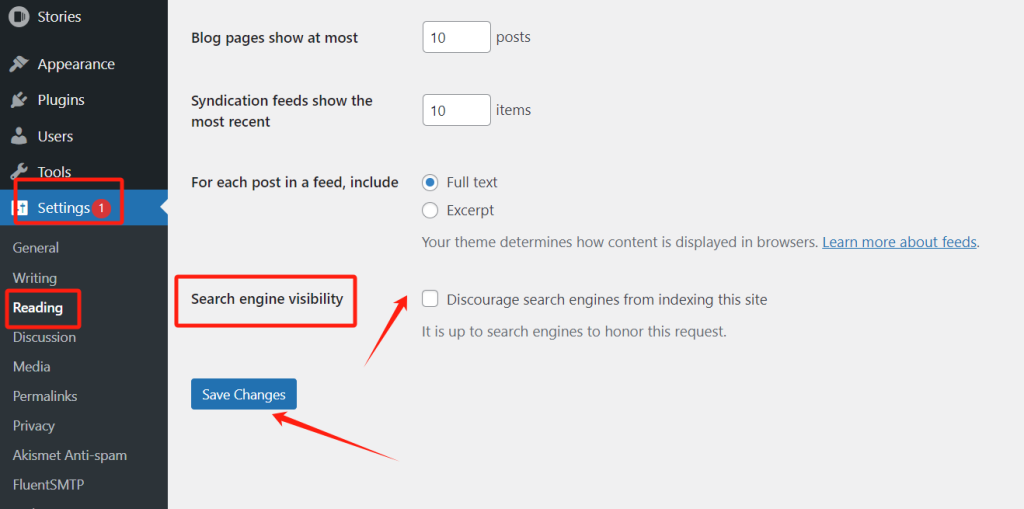
Se esta caixa estiver marcada, desmarque-a e clique em "Guardar alterações".
Agora, os motores de busca como o Google devem ser capazes de encontrar o seu site e mostrá-lo aos utilizadores que procuram conteúdos relevantes.
2. Active as actualizações automáticas de plug-ins e temas
Os plug-ins e os temas são as principais razões pelas quais o WordPress é tão popular. No entanto, se não mantiver o seu software atualizado, isso pode ter um impacto negativo na classificação do seu site nos motores de busca.
Os programadores lançam frequentemente actualizações para corrigir vulnerabilidades de segurança em temas e plug-ins. A utilização de versões desactualizadas pode deixar o seu site vulnerável, tornando-o um alvo para os hackers que exploram estas falhas de segurança.
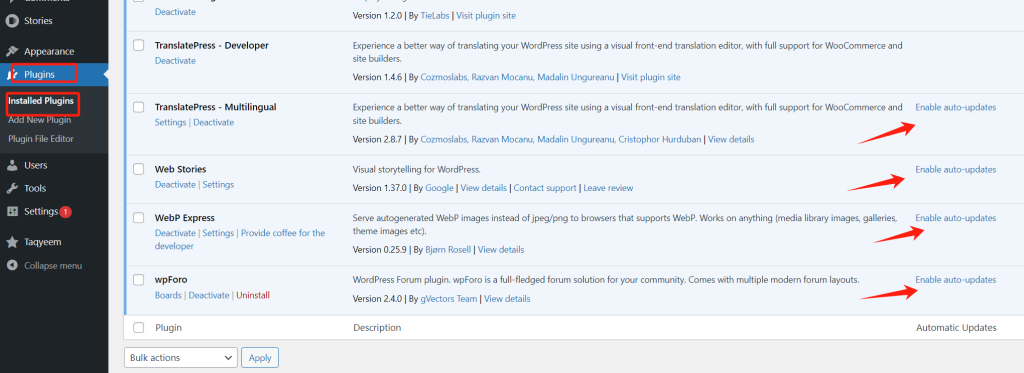
Se o seu sítio Web for pirateado, isso pode afetar gravemente a sua classificação e o seu tráfego. Motores de pesquisa como o Google podem até remover um site comprometido do seu índice, tornando o seu conteúdo invisível nos resultados de pesquisa.
Se navegadores como o Google Chrome detectarem um site pirateado, podem bloquear o acesso e avisar os utilizadores de um potencial perigo.
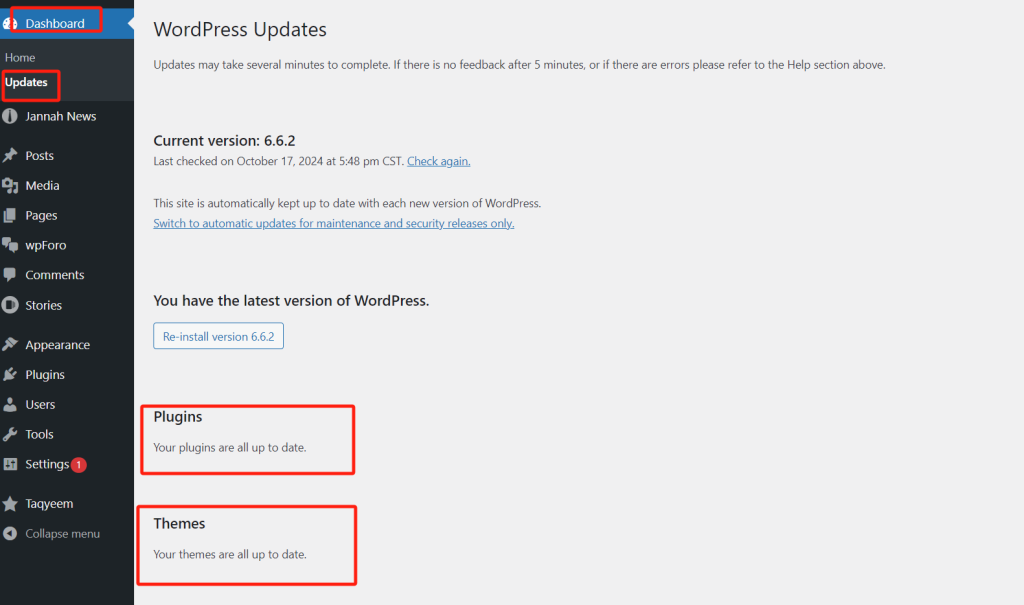
As versões mais antigas do software também são mais susceptíveis de causar falhas, conflitos e outros erros comuns do WordPress, que podem diminuir a velocidade e o desempenho do seu site e prejudicar a sua SEO.
Pode ativar as actualizações automáticas nas definições do WordPress para manter os temas e os plug-ins actualizados, garantindo que o seu site permanece seguro e optimizado.
3. Utilize categorias e etiquetas para organizar o conteúdo
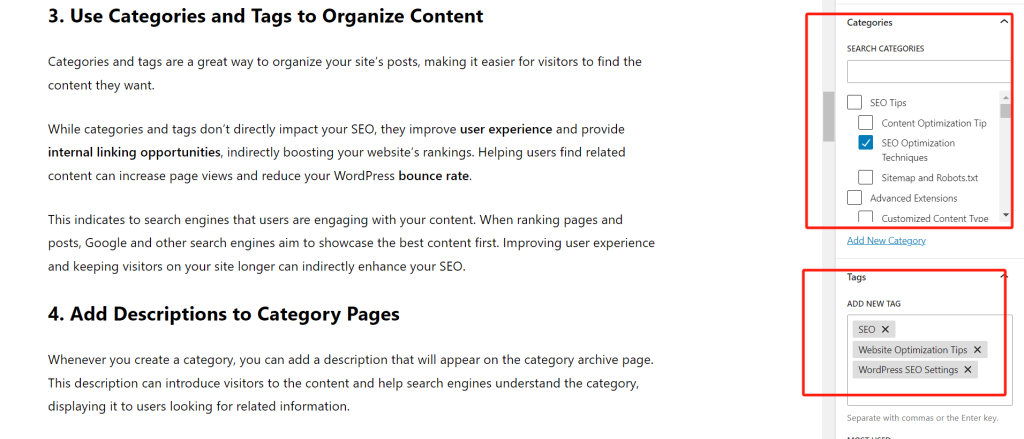
As categorias e as etiquetas são uma óptima forma de organizar as publicações do seu site, tornando mais fácil para os visitantes encontrarem o conteúdo que pretendem.
Embora as categorias e as etiquetas não tenham um impacto direto na sua SEO, melhoram experiência do utilizador e fornecer oportunidades de ligação internae, indiretamente, aumentar a classificação do seu sítio Web. Ajudar os utilizadores a encontrar conteúdos relacionados pode aumentar as visualizações de páginas e reduzir o seu WordPress taxa de ressalto.
Isto indica aos motores de busca que os utilizadores estão a interagir com o seu conteúdo. Ao classificar páginas e publicações, o Google e outros motores de busca pretendem mostrar primeiro o melhor conteúdo. Melhorar a experiência do utilizador e manter os visitantes no seu sítio durante mais tempo pode melhorar indiretamente a sua SEO.
4. Adicione descrições às páginas de categoria
Sempre que cria uma categoria, pode adicionar uma descrição que aparecerá na página de arquivo da categoria. Esta descrição pode apresentar o conteúdo aos visitantes e ajudar os motores de busca a compreender a categoria, apresentando-a aos utilizadores que procuram informações relacionadas.
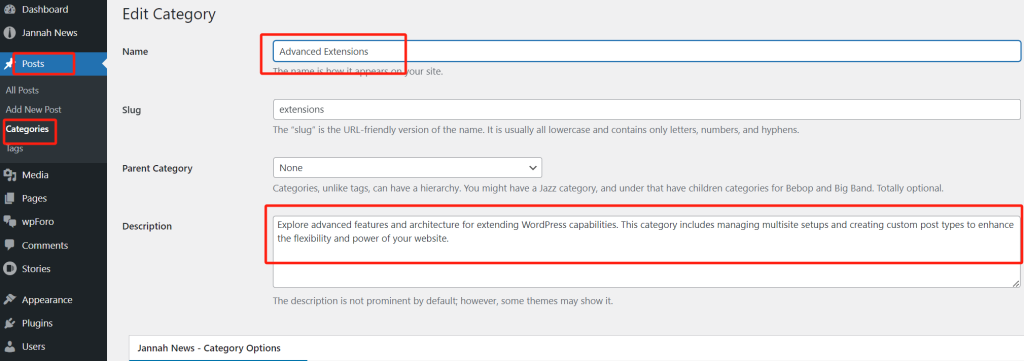
Para adicionar uma descrição de categoria no WordPress, aceda a Publicações > Categorias.
Introduza o nome da categoria, crie um slug e adicione uma categoria principal opcional.
Para adicionar uma descrição, escreva-a no campo Descrição campo.
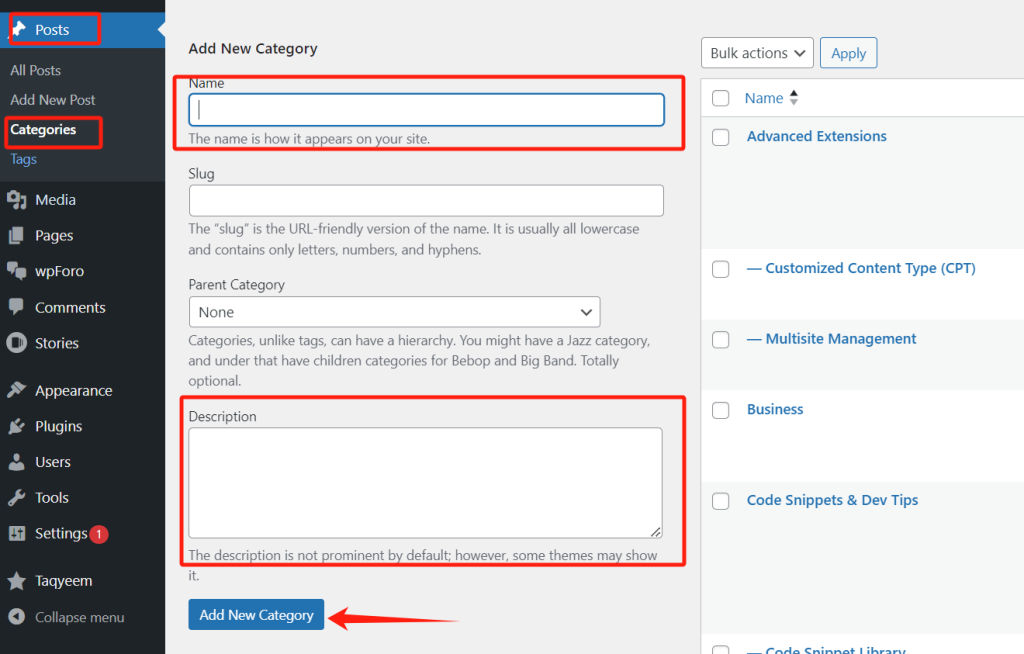
Quando estiver satisfeito com os pormenores, clique em "Adicionar nova categoria".
Para adicionar descrições a categorias existentes, clique no botão Editar junto à categoria, adicione a sua descrição e clique em "Atualizar" para o salvar.
5. Optimize a estrutura do Permalink do WordPress
Ao analisar as páginas Web, os motores de busca não olham apenas para o conteúdo - também utilizam vários factores, incluindo a estrutura das hiperligações permanentes, para classificar e apresentar o seu conteúdo.
A otimização dos seus URLs ajuda os motores de busca a compreender o conteúdo das suas páginas para que possam mostrá-lo aos utilizadores no momento certo.
Nota: Alterar a sua estrutura de permalink pode prejudicar o seu SEO se o seu site já estiver ativo há algum tempo. Se decidir alterar os permalinks num site estabelecido, é crucial configurar redireccionamentos adequados.
Por predefinição, o WordPress utiliza os nomes dos posts nos seus URLs, que podem ser longos e pouco atraentes. Para otimizar isto, vá a Definições > Permalinks no seu painel de controlo do WordPress.
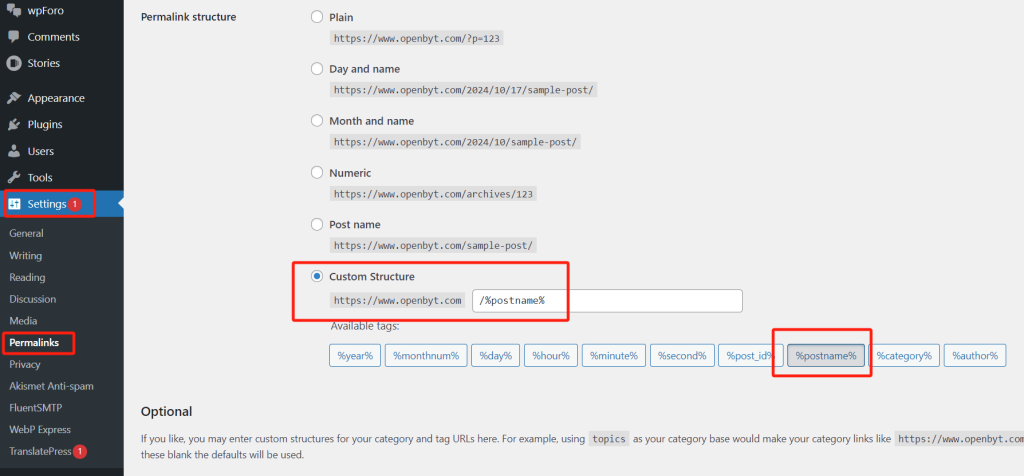
Aqui, verá as diferentes estruturas de ligação permanente disponíveis:
- Simples (https://www.example.com/?p=123): Esta estrutura necessita de uma visão do conteúdo da publicação, o que a torna menos ideal para SEO.
- Dia e nome (https://www.example.com/2024/10/17/sample-post/): Inclui o mês e o ano no URL, o que pode ser adequado para conteúdos sensíveis ao tempo, como notícias. No entanto, pode criar URLs longos que podem fazer com que o conteúdo pareça desatualizado.
- Numérico (https://www.example.com/123): Tal como a estrutura simples, esta não dá aos motores de busca qualquer informação sobre o conteúdo da publicação.
- Nome do posto (https://www.example.com/sample-post/): Utilizar o nome da publicação no URL é ideal para a maioria dos sítios Web.
- Custom Structure (https://www.example.com/%category%/%author%/%postname%/): Utilizar uma estrutura personalizada pode ser uma óptima escolha se o seu conteúdo estiver organizado por categoria. A adição de categorias ajuda os motores de busca a compreender o conteúdo do seu Web site e a inclusão do autor pode aumentar a autoridade e a experiência.
6. Instale um certificado SSL no seu site WordPress
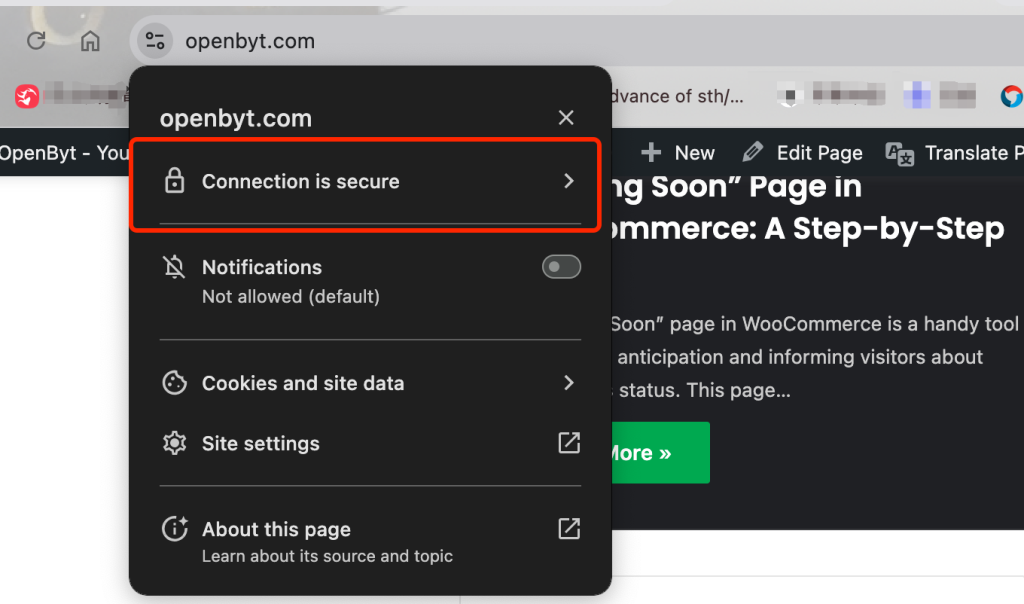
O SSL (Secure Sockets Layer) é um protocolo que protege a transmissão de dados entre o browser de um utilizador e o seu sítio Web.
Um certificado SSL é essencial se recolher dados sensíveis, como pagamentos com cartão de crédito. Mas mesmo que não o faça, pode melhorar a sua SEO.
Com um certificado SSL, os visitantes verão um ícone de cadeado junto ao URL do seu sítio Web no seu navegador, indicando uma ligação segura. Isto aumenta a confiança do utilizador e pode levar a tempos de sessão mais longos, enviando sinais positivos aos motores de busca. O Google também declarou que os certificados SSL são um fator de classificação.
7. Adicione texto alternativo às imagens
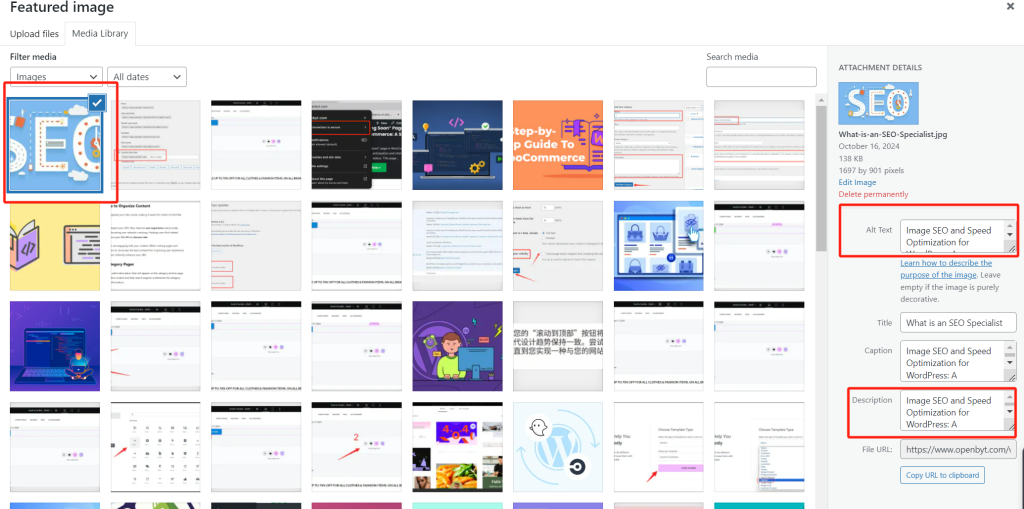
Quando carrega imagens, é uma boa ideia adicionar texto alternativo. Também conhecido como texto alternativo, este é um atributo HTML que descreve as imagens.
Os leitores de ecrã utilizam texto alternativo para ajudar os utilizadores com deficiências visuais a compreenderem o conteúdo de uma imagem.
Os motores de busca também utilizam o texto alternativo para compreender o conteúdo das imagens. É uma boa prática utilizar um texto alternativo descritivo e incluir palavras-chave relevantes, se necessário.
O Google inclui texto alternativo nos resultados da pesquisa de imagens, pelo que um texto alternativo bem escrito pode aumentar o tráfego para as publicações do seu Web site.
Introduza o texto alternativo no campo Texto alternativo quando carregar uma imagem para a biblioteca multimédia do WordPress.
Se a imagem já tiver sido adicionada ao editor de conteúdos, clique no bloco de imagem e introduza o texto alternativo no campo Texto alternativo no menu do lado direito.
8. Crie um menu de navegação de fácil utilização
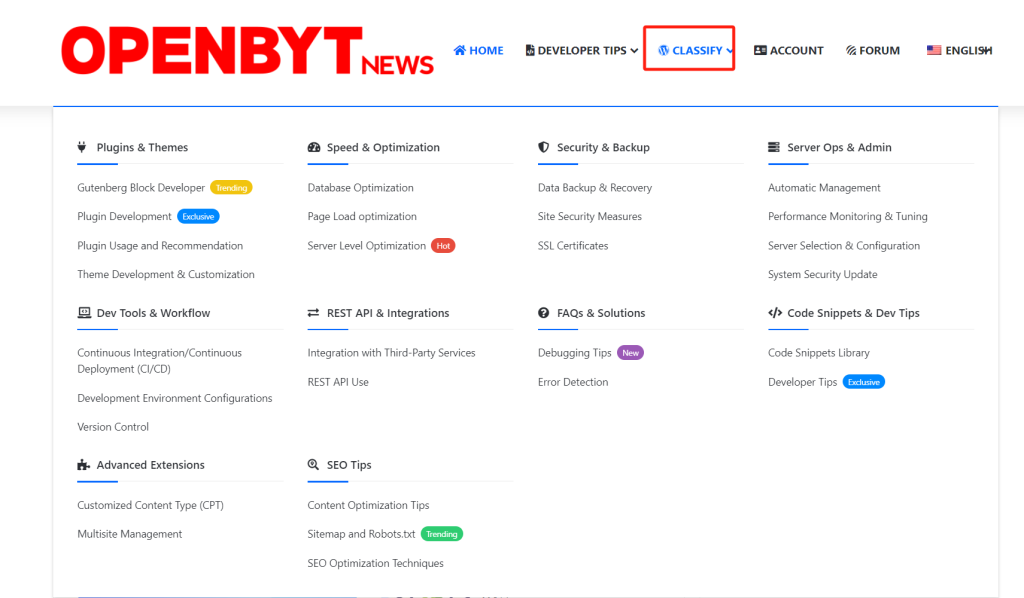
Quanto mais tempo as pessoas permanecerem no seu sítio Web, maiores serão as suas hipóteses de obter uma classificação mais elevada nos resultados dos motores de busca. Um menu de navegação lógico e de fácil utilização é fundamental para o conseguir.
Estes menus ajudam os utilizadores a encontrar conteúdo interessante, incentivando-os a permanecer no seu site WordPress durante mais tempo e melhorando métricas como o número médio de páginas visitadas.
Aceda a Aparência > Menus no seu painel de controlo do WordPress para criar um menu de navegação.
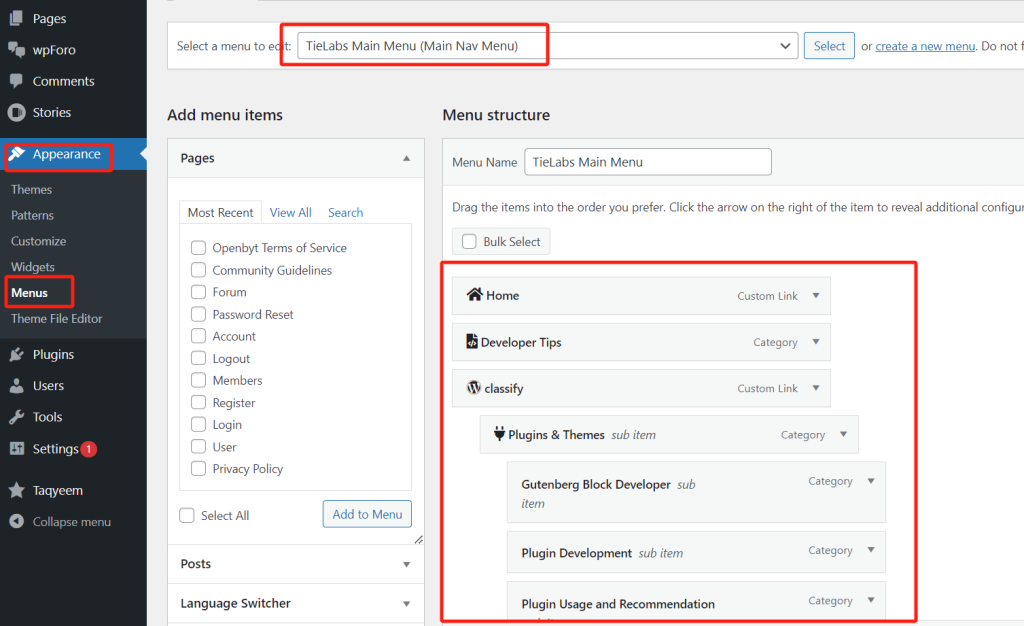
Pode criar vários menus e adicionar páginas, publicações ou ligações personalizadas aqui.
9. Proteja o seu site contra comentários de spam
Uma secção de comentários animada pode manter as pessoas envolvidas no seu site durante mais tempo e incentivá-las a regressar, o que pode melhorar indiretamente a sua SEO. Além disso, se os comentadores utilizarem palavras-chave relevantes, a sua discussão pode melhorar a SEO do seu sítio Web.
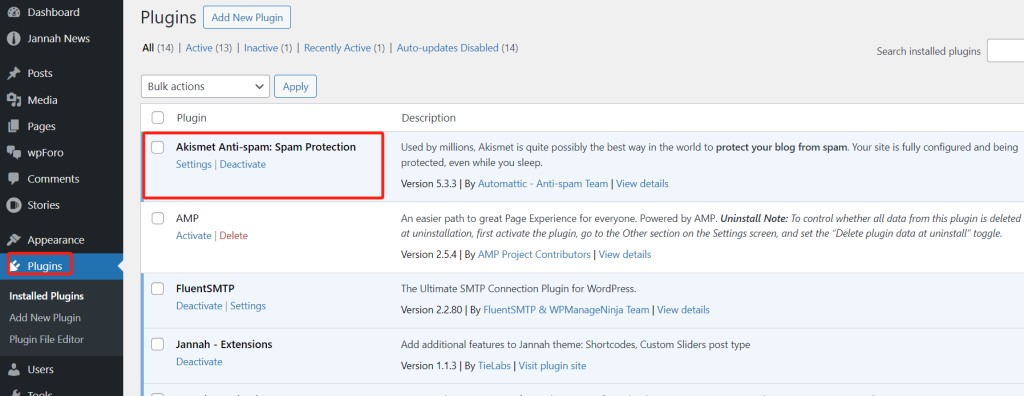
No entanto, os comentários de spam são um problema significativo. Os spammers e os bots podem tentar publicar comentários de baixa qualidade com links maliciosos, o que pode prejudicar as suas classificações. Nos piores casos, o seu site pode até ser bloqueado pelo Google.
Para gerir eficazmente os comentários, vá a Definições > Discussão.
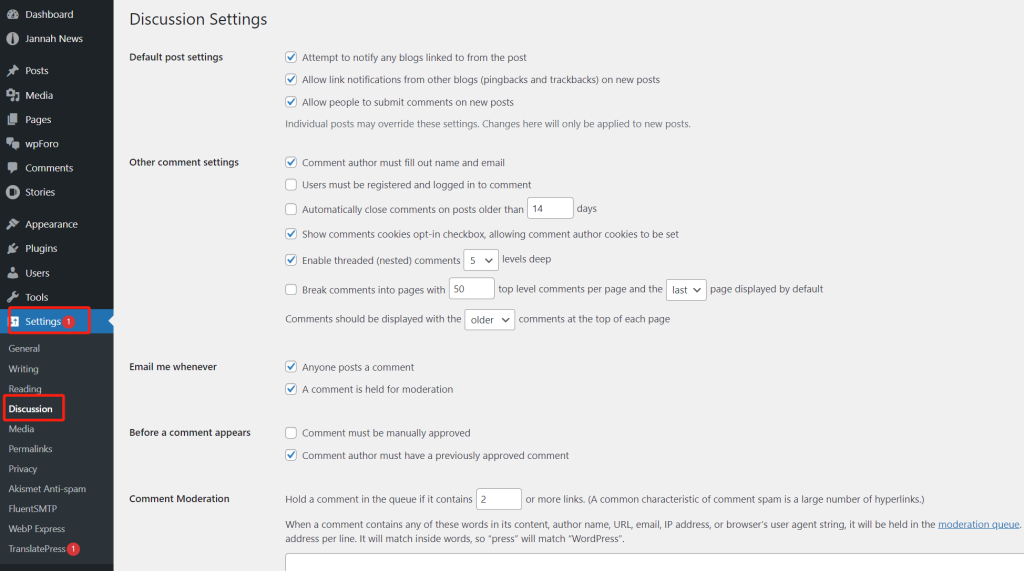
Encontrará opções para ajudar a controlar o spam, como exigir que os utilizadores forneçam um nome e um endereço de e-mail antes de comentarem.
10. Verifique o seu Sitemap do WordPress
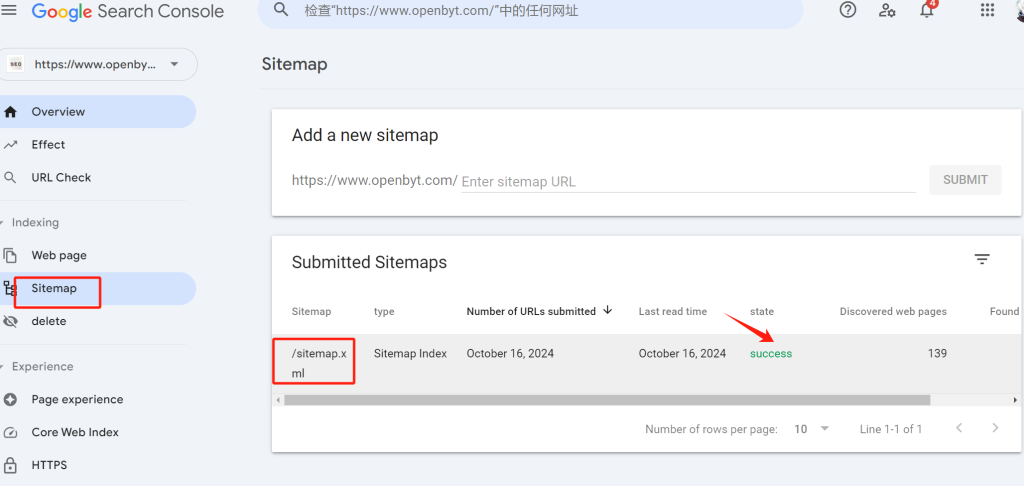
A mapa do sítio é um ficheiro que lista todo o conteúdo do seu sítio Web num formato legível por máquina. Funciona como um roteiro, ajudando os motores de busca a descobrir as suas páginas e a indexá-las corretamente.
Os Sitemaps também podem indicar quais as ligações mais importantes e com que frequência são actualizadas, incentivando os motores de busca a dar prioridade ao seu conteúdo mais valioso.
O WordPress cria automaticamente um mapa do sítio. Para o visualizar, basta introduzir o seu domínio seguido de /sitemap.xml (por exemplo, www.example.com/sitemap.xml).
11. Teste a capacidade de resposta móvel do seu site WordPress
Com mais de 50% de utilizadores a aceder a sítios Web através de smartphones ou tablets, é necessário garantir que o seu sítio Web WordPress é compatível com dispositivos móveis. O Google indexa a versão móvel do seu sítio em vez da versão para computador.
Mesmo que utilize um tema responsivo do WordPress, é crucial verificar como o seu sítio aparece nos dispositivos móveis.
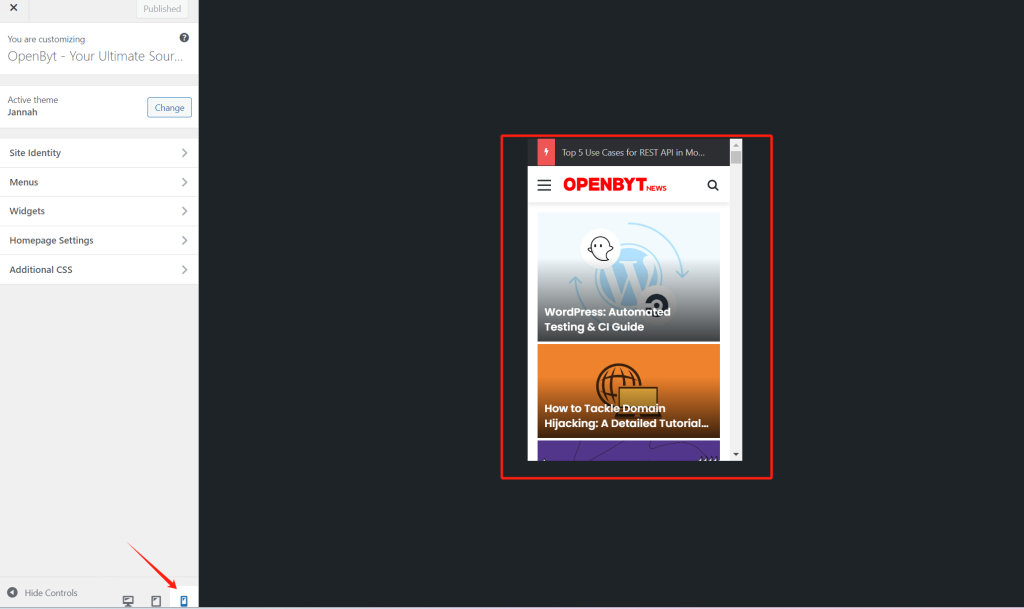
Pode pré-visualizar a versão móvel do seu sítio WordPress utilizando o Personalizador de temas. Aceda a Aparência > Personalizar no painel de controlo e clique no ícone do telemóvel na parte inferior.
Dominar as definições do WordPress para uma melhor SEO

Compreender quais as definições do WordPress que têm impacto na sua SEO é vital para desbloquear o potencial do seu site. Desde a otimização das hiperligações permanentes à adição de texto alternativo para imagens e ao reforço da segurança com um certificado SSL, estes pequenos ajustes podem ter um impacto significativo na visibilidade do seu sítio Web e na classificação nos motores de busca.
Embora os plug-ins e outras ferramentas possam, sem dúvida, ajudar nos seus esforços de SEO, dominar as definições incorporadas do WordPress dá-lhe uma base sólida. Estas definições ajudam a melhorar a experiência do utilizador e comunicam os sinais certos aos motores de busca, facilitando a classificação do seu site nos resultados de pesquisa relevantes.
Ao concentrar-se nas definições fundamentais do WordPress discutidas acima, pode evitar as armadilhas comuns que impedem o seu sucesso de SEO. Reserve algum tempo para otimizar o seu Web site, atualizar o seu software e garantir que os utilizadores e os motores de busca possam navegar facilmente no seu Web site. Com estas estratégias em vigor, está no caminho certo para criar um Web site WordPress bem-sucedido e com uma classificação elevada que atrai e retém visitantes.

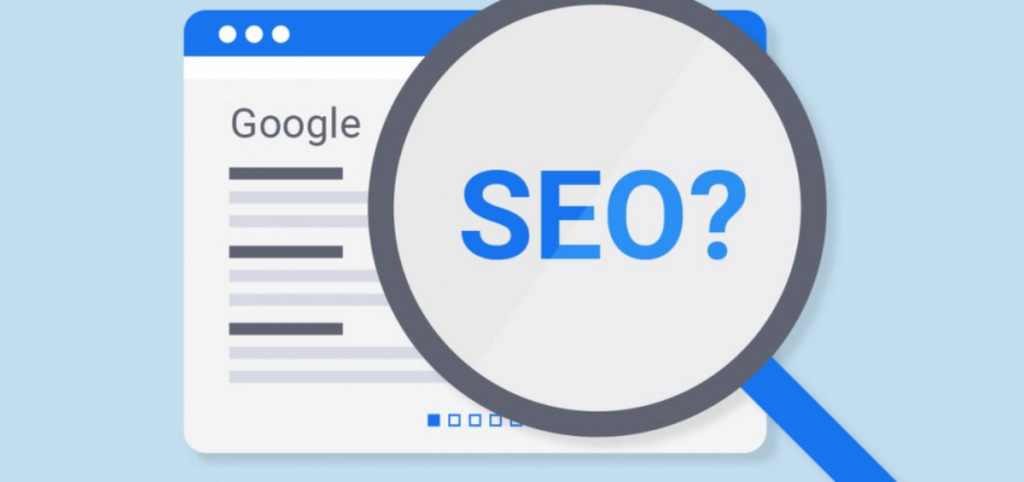
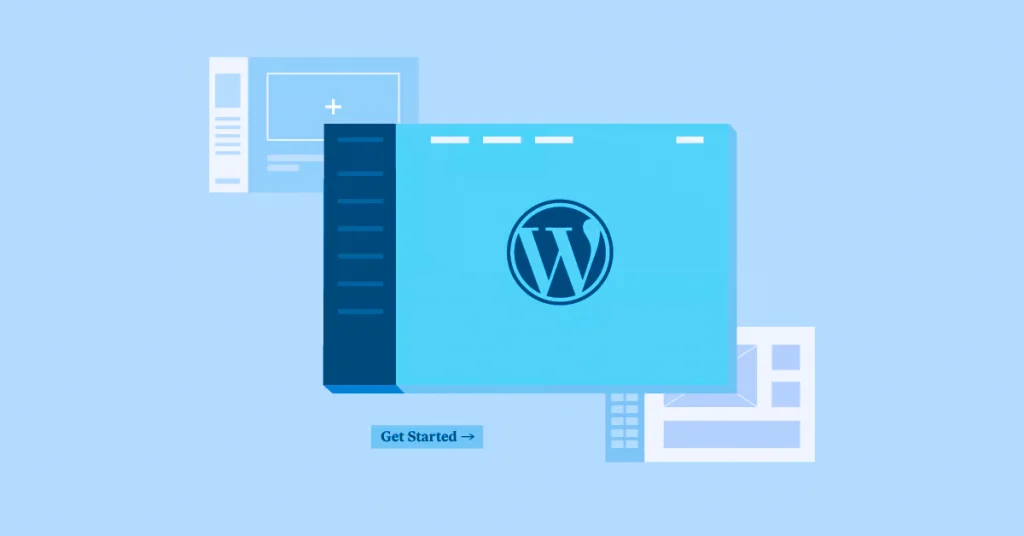
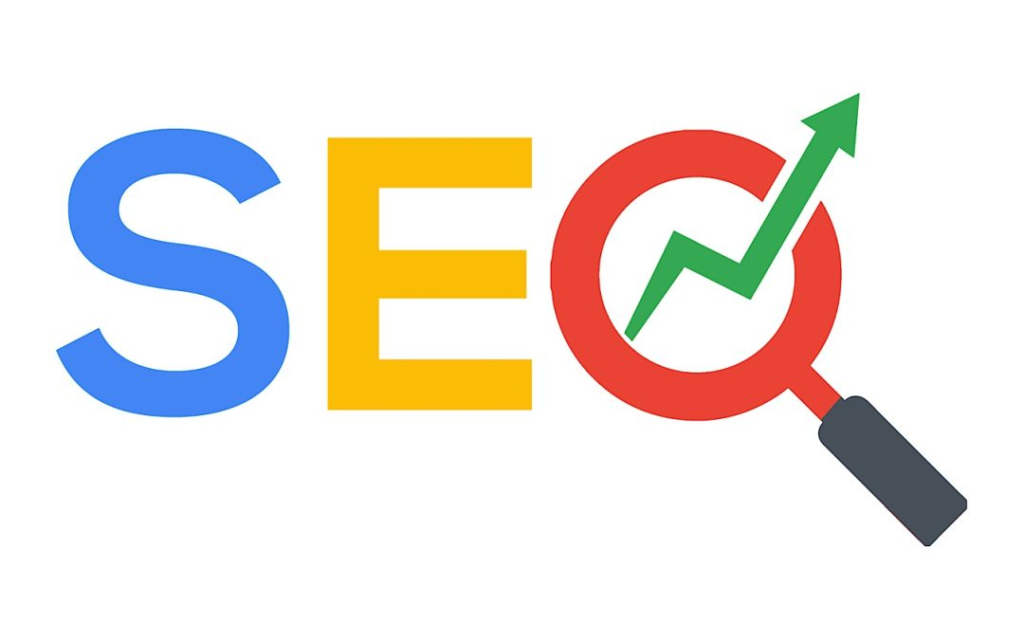
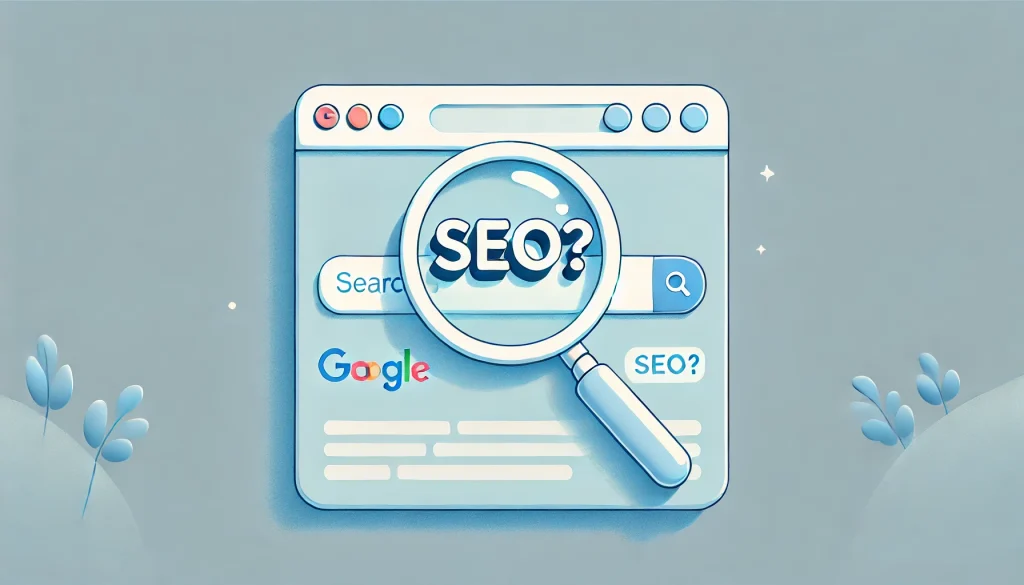


Respostas